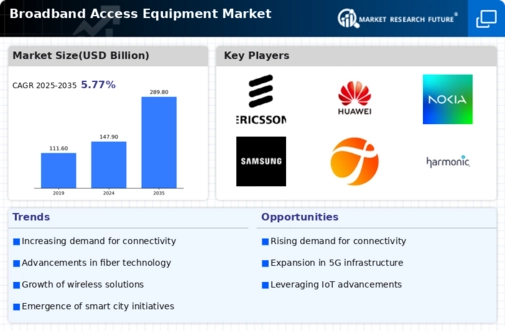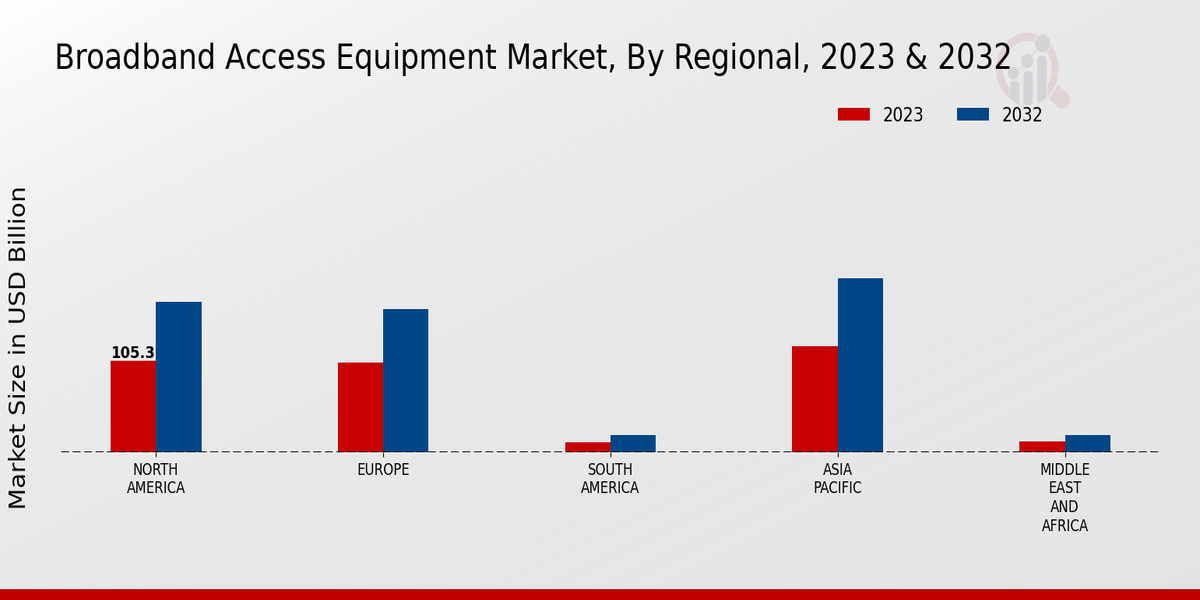Expansion of Smart Cities
The development of smart cities significantly influences the Global Broadband Access Equipment Market Industry. As urban areas evolve into smart cities, the need for robust broadband infrastructure becomes paramount. These cities rely on interconnected devices and systems for efficient management of resources, transportation, and public services. The integration of broadband access equipment is crucial to support the vast data exchange required for smart technologies. This trend is expected to drive substantial investments in broadband infrastructure, contributing to the market's growth trajectory as cities aim to enhance the quality of life for their residents.
Emergence of 5G Technology
The rollout of 5G technology is transforming the Global Broadband Access Equipment Market Industry. With its promise of ultra-fast speeds and low latency, 5G is set to revolutionize how consumers and businesses access the internet. This technology requires advanced broadband infrastructure to support its deployment, leading to increased investments in access equipment. As 5G networks expand globally, the demand for compatible broadband solutions is likely to rise, further driving market growth. The anticipated market value of 289.8 USD Billion by 2035 underscores the transformative impact of 5G on broadband access.
Market Trends and Projections
Government Initiatives and Funding
Government initiatives play a pivotal role in shaping the Global Broadband Access Equipment Market Industry. Many countries are implementing policies aimed at expanding broadband access to underserved areas. Funding programs and subsidies are being introduced to incentivize private sector investments in broadband infrastructure. This is particularly relevant in rural regions where connectivity remains a challenge. As governments prioritize digital inclusion, the market is likely to benefit from increased funding and support, which could lead to a more equitable distribution of broadband services across various demographics.
Growth of Internet of Things (IoT)
The proliferation of the Internet of Things (IoT) is a significant driver for the Global Broadband Access Equipment Market Industry. As more devices become interconnected, the demand for reliable and high-capacity broadband infrastructure intensifies. IoT applications span various sectors, including healthcare, agriculture, and transportation, necessitating robust connectivity solutions. The market is expected to experience a compound annual growth rate (CAGR) of 6.31% from 2025 to 2035, reflecting the increasing need for advanced broadband access equipment to support the growing IoT ecosystem and its associated data traffic.
Rising Demand for High-Speed Internet
The Global Broadband Access Equipment Market Industry experiences a surge in demand for high-speed internet services, driven by the increasing reliance on digital technologies. As more consumers and businesses seek faster connectivity, the market is projected to reach 147.9 USD Billion in 2024. This demand is particularly pronounced in developing regions, where internet penetration is still growing. Governments are investing in infrastructure to support this demand, which further propels the market. Enhanced broadband access is essential for economic growth, education, and healthcare, making it a priority for many nations.















